Despite a rough introduction the Canon EOS-M series is developing into a solid product offering. And it was a rough start, the first model with the first software version was so bad I sent the first camera I ordered back in frustration and disappointment.
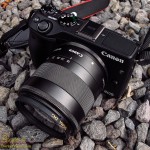
In time, and after receiving a withering round of criticism, Canon fixed some of the most striking deficiencies in the original EOS-M, in particular the sluggish and erratic focusing. With the fixes in place, and steep price discounts, I gave the camera another try. I have gradually come to like this little camera. The photo quality is quite good, the EOS-M lenses are nice and sharp, and the touch screen a very usable feature I have often missed in my full size DLSR’s.
After a couple years of shooting with the EOS-M I decided to order the EOS-M3, the latest offering in the product line. For reasons a mystery outside Canon the camera was originally not released in the US, available in Japan since early 2015. Only in the last month has news come that the camera will become available for order here in the US. Not willing to wait, and the start of an adventure looming on the calendar I ordered a Japanese version on eBay. No issue, there are YouTube videos that explain how to navigate the kanji menus and set the language to English. Thus my fun with a new camera began.
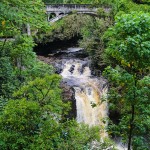
The mirrorless cameras have become a strong option to DLSRs in all but the most demanding of photographic challenges. Some of the product offerings are very, very good. I have considered one of the Sony A7 series, currently the best regarded of these compact cameras. But at four times the price it is hard to justify. I tend to take this small camera places I would not take my more expensive and bulky DSLR’s. This results in photo opportunities that would otherwise pass un-captured. As many photographers say… The best camera is the one you have with you.
And there have been risks. I once took the original EOS-M to the top of the Keck 1 dome on a day we were replacing a shutter cable. It was a beautiful day, with the whole crew working on the dome creating many photo opportunities in the moments I was not helping manhandle the cable into place. The risks were amply demonstrated when one of the guys turned around and swung a fall restraint strap, with a heavy buckle, right into the front of the camera on my chest. There was an awkward pause as we listened to the glass shards sounding musical notes tumbling down side of the dome. I unscrewed the remains of the UV filter, blew the glass dust off the lens, and kept shooting. The camera and lens were unharmed despite the dramatic destruction of the UV filter that took the blow. There is a reason I carry these little cameras on the job… Small enough not to get in the way, inexpensive enough to expose to the risk inherent to where I go, good enough to get the shot with solid results.

The cameras can also accept a wide range of lenses. There are several very good native EOS-M lenses now available with several more rumored to be in the works. With an adapter I can use any of the standard Canon EOS lenses providing a large range of options. There are also adapters for other lens series, even the old manual Canon FD lenses. Indeed, I have mounted quite the assortment of odd lenses to the front of these cameras.
The EOS-M3 offers a number of significant improvements on the original. A tilting screen allows comfortable viewing despite odd camera positions, a full mode dial has been added for much faster mode switching, a real exposure compensation dial is also added, a very welcome feature for serious shooting. A WiFi interface has also been added allowing proper remote control of the camera, this feature will require more exploration to see what I can accomplish with it.
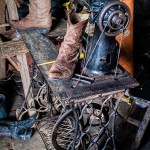
A couple notable features are still missing… No GPS is present in the camera for geotagging images. No intervalometer mode is present, a mystery that continues to baffle me, Canon does not offer intervalometer functions in camera while Nikon does. The camera is reputed to not be capable of tethered shooting, something I need to double check and perhaps actually try.
The display can be difficult to use in full sunlight. Considering the lack of a proper viewfinder this can be an issue. An electronic viewfinder is available that plugs into the hot shoe to alleviate this issue. In full tropical sunlight I could use the display, but with a greatly reduced effectiveness, having difficulty in making out the preview frames without shielding the camera from the light.
The original EOS-M had a very poor grip, just a small rubber pad. I replaced this with one of the excellent CNC machined grips from Richard Franiec that made all the difference, the grip was now quite confident. No need to do this with the EOS-M3, the camera grip is vastly improved from the start. I found the camera grip comfortable, providing a confident hold.

Importantly the M3 features a tilt screen that allows viewing in awkward positions. Personally I find this feature endlessly useful as I have a habit of positioning the camera in odd spots. On the back of a telescope or simply on a wall or the ground to provide a makeshift support for long exposures, I really appreciate this feature (can I say that a few more times?).
I have noted that the touch screen function does not seem quite as responsive as the original M, occasionally having to touch the magnify function a couple times to get x5 or x10 in order to perform critical focusing. The touch shoot function can be completely disabled with a menu selection.

Another issue is that the manual focus function can be triggered without any obvious warning by simply rocking the multifunction dial accidentally. This can result in out of focus frames that may escape notice until you have been shooting a while. This happened to me at least twice in Nicaragua resulting in some lost shots before I noticed.
While the camera does not operate in a tethered mode, it does operate remotely with a WiFi connection. Unlike the original EOS-M this remote control capability allows the camera to be used for astrophotography. Inexcusably the Canon Camera Connect remote application does not offer any sort of programmatic operation. There is no way to take a series of exposures for timelapse or an astrophotography stack, each exposure must be triggered manually. Hopefully a third party application will address this shortcoming. The original Canon EOS Remote application does not support the M3, you must use the newer Canon Camera Connect application.
After two weeks of shooting the M3 while traveling in Nicaragua I think I have gotten a good handle on the camera performance. Excellent photo quality, decent ergonomics, an accurate focus system, and excellent general performance make the M3 a good shooting choice, particularly for street and travel photography. There are certainly some quirks to the camera that could be better, but at the moment I am happy with the camera. I do need to get a little more EOS-M glass for the camera. Perhaps the 55-200mm and the rumored 35mm f/1.8 lens to round out my kit. I look forward to shooting the EOS-M3 as my primary carry camera over the next few years.

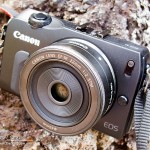
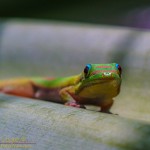
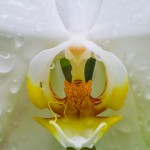


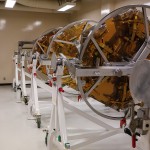
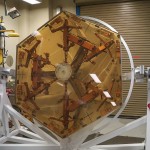
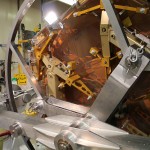







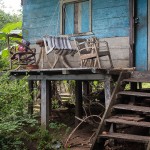


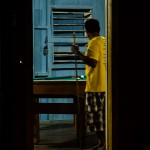



Thanks for your review and comments Andrew. I went and ordered one after reading your previous post. Managed to get the EVF for $18 in a “bundle”, Black Friday sales…and it is still being offered.
Your pictures look great. Please keep posting with any new discoveries you may make!
the M series is not a complete DLSR replacement, it does have limitations. But when you want a capable camera and do not want the size of the DLSR it can be just the answer. I do not have the EVF, there are times it would be rather useful, let me know how well it works.